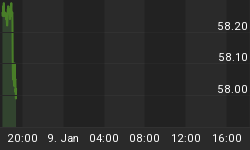Since its introduction more than a decade ago, the Renewable Fuel Standard (RFS) hasn’t cut gasoline prices outside the Midwest and has even led to a slight rise in pump prices in states far from ethanol production, while the standard has had a limited effect, if any, on greenhouse gas emissions.
These are the key findings of a new report from the United States Government Accountability Office (GAO) prepared at the request of Republican Senator for Oklahoma, James Lankford, who supports policies to lower the biofuel volumes to reflect market realities that gasoline demand turns out to be lower than what the legislators had predicted when enacting the RFS more than a decade ago.
Under the RFS, oil refiners are required to blend growing amounts of renewable fuels into gasoline and diesel. This policy has long pitted the agriculture lobby against the oil refining lobby. The Midwest farm belt benefits from the RFS policy because it increases demand for ethanol, but the oil refiners do not—they lose petroleum-based market share of fuels, and meeting the blending requirements costs them hundreds of millions of dollars.
In a recent blow to the ethanol industry in the farming vs. oil refining battle, a federal appeals court has denied a renewable fuel group’s attempt to block the Environmental Protection Agency (EPA) from issuing small refinery exemptions (SREs) to the Renewable Fuel Standard.
Now it looks like the RFS and its effects on prices and emissions are also pitting one government agency against another.
The GAO’s new report drew criticism from the U.S. Department of Agriculture (USDA), which said in written comments included in the report that it disagrees with the conclusion that the RFS hasn’t had effect on reducing greenhouse gas emissions. The USDA also criticized the GAO’s methodology to ask experts about their views on the effect on gasoline prices and emissions and, regarding the effects of the RFS on gasoline prices, said that the “conclusion that the RFS likely had modest impacts on gasoline prices should be augmented by a discussion of the volatility of gasoline prices.”
The GAO said in its report that “Ethanol is produced primarily in the Midwest, where most corn is produced. According to the studies we reviewed, this means that Midwest gasoline retailers, being closer to the supply of ethanol, may have been able to charge consumers lower prices for retail gasoline relative to non-Midwest gasoline retailers because of their lower transportation costs for ethanol. Similarly, higher transportation costs outside of the Midwest may have resulted in higher prices of retail gasoline in those regions.”
According to the GAO, evidence from analysis, studies, and interviews that it held with experts suggests that the RFS “was likely associated with modest gasoline price increases outside of the Midwest and that these price increases may have diminished over time.”
Referring to the RFS on emissions, “Most of the experts GAO interviewed generally agreed that, to date, the RFS has likely had a limited effect, if any, on greenhouse gas emissions,” the report said.
Drawing on the opinions of experts and GAO’s prior work, the ‘limited effect’ is likely the result of RFS reliance on conventional corn-starch ethanol, which has a smaller potential to reduce emissions compared with advanced biofuels, and the fact that most corn-starch ethanol has been produced in plants exempt from emissions.
Going forward, GAO’s analysis suggests that “the RFS is unlikely to meet the greenhouse gas emissions reduction goals envisioned for the program through 2022,” because corn-starch ethanol will continue to dominate the biofuels as it is economical to produce, while advanced biofuels with the potential to achieve greater emission reductions—cellulosic ethanol for example—are not cheap to produce.
As far as emission reductions are concerned, the USDA begs to differ. A study—led by Dr. Jan Lewandrowski of USDA’s Office of the Chief Economist and published in March 2019—found that greenhouse gas emissions from corn-based ethanol are about 39 percent lower than gasoline. In cases when ethanol is refined at natural gas-powered refineries, the emissions are even lower, around 43 percent below gasoline, according to the study.
As for the effect of the RFS on gasoline prices, the Renewable Fuels Association said last month that according to a new study from energy policy expert Dr. Philip K. Verleger, Jr., the savings to consumers resulting from the RFS averaged $0.22 per gallon between 2015 and 2018.
“That’s a savings of nearly $5 every time you fill up, or $250 per American family every year,” the Renewable Fuels Association says, while the study points out that “Retail prices would today be above $4 per gallon, not $2.90, were renewable supplies removed from the supply mix.”
















